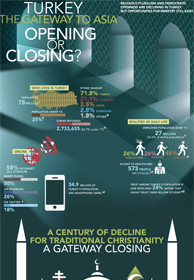Crossing Cultures with Ruth: Lessons on Thriving in Mission
by James Nelson
Global Mapping International
—Reviewed by Lynn D. Shmidt, mission practitioner; associate professor of mission, Asbury University
At first glance, one wonders what the story of Ruth could say to cross-cultural ministry. As James Nelson observes, “She was not even a Christian” (p. 10). The opening chapter sets the book’s theme, looking at Ruth as a model for cross-cultural workers who must learn different cultures and make the necessary cultural adjustments to thrive. The story of Ruth depicts an analogy with parallels that explore lessons for missions: Boaz, the Master Redeemer, is already present before the cross-cultural worker arrives. Ruth is the cross-cultural worker who partners with the Master to minister reconciliation and life. Naomi represents those in need within the local culture.
Chapters two and three explain the story background: the loss of family and hope for Naomi and the affirmation of Ruth’s commitment to stay with Naomi. These two chapters effectively illustrate the absolute self-giving necessary for committing to a new people and culture. Chapters four to thirteen follow a pattern; first, the setting of Ruth’s story is given that relates a continuing part of the story in each succeeding chapter. There follows a discussion of major lessons evoked in that part of the story, and concludes with illustrations from various sources of missiological research. This book can be very beneficial in a classroom for provoking discussion concerning contextual ministry. The lessons are exegetically valid and comprehensive, including areas of full trust in the Master Redeemer (Boaz), attentiveness to behavior and communication within the local culture (Naomi), and identification of the cross-cultural worker (Ruth) with those she serves.
One slight criticism of the book is that two or three times Boaz becomes the model of the cross-cultural worker rather than Ruth. The clearest example (chapter 11) discusses why Boaz’s plan to redeem Naomi’s land and Ruth was risky and relied heavily on the reputation he had built up within the community. “Here we see a key reason for developing a good reputation: so you can spend it at key moments. This was just such a moment for Boaz” (p. 132). The lessons may be legitimate, but the muddle of the analogical parallels introduces the possibility of confusion.
Finally, two elements of the book are highly commended. First, the “Action Plan” sections that conclude most chapters promote personal reflection and timely discussion for a class or small-group setting. Second, although Ruth is the focus for the model, Nelson often points to the ultimate model of a cross-cultural worker, Jesus Christ. At times, language that suggests Christ is used: “Ruth was of this same mind [as Christ] as she committed to identify with Naomi, emptying herself of all that was familiar and becoming as like her as possible, even to death” (p. 36).
This book clearly demonstrates that the whole Bible is capable of informing what are often thought to be New Testament themes, and this “rethinking” of Ruth applies to contemporary cross-cultural ministry lessons and techniques.
….
EMQ, Vol. 51, No. 2 pp. 230-231. Copyright © 2015 Billy Graham Center for Evangelism. All rights reserved. Not to be reproduced or copied in any form without written permission from EMQ editors.





